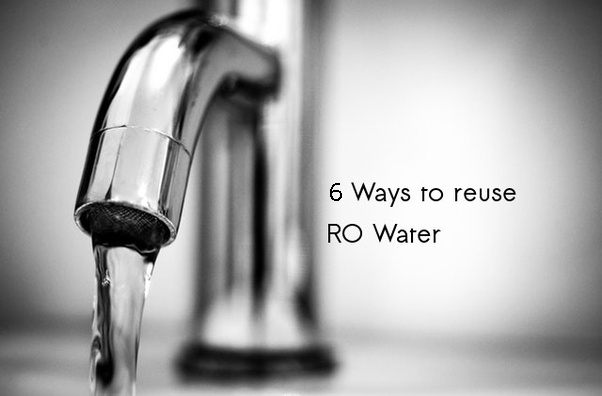Using RO water purifiers not only gives us safe, clean and tasty water but also protects us from life-threatening waterborne diseases.
But there is one big drawback of using RO water purifiers i.e. the excessive wastage of water. An average RO purifier wastes approximately 3 litres of water for every 1 litre of purified water. That means only 25% of water is purified and 75% of water comes out as waste.
Wondering why so much water is wasted? Reverse Osmosis (RO) purifiers use membrane technology to filter dissolved impurities, the impure water is filtered out and is often called waste water or reject water. The percentage of waste water varies according to the RO purifier being used.
Because of the high level of impurities and dissolved solids this reject water is not fit for drinking or bathing.
However, the RO waste water can be used in various ways to avoid overall wastage of water in your home or office.
Before we check out how we can use this waste water, it is important to keep some basic things in mind to avoid any issues or problems.
6 Easy Ways to Re-use RO Reject Water
1. Wash Your Car
A single car wash could consume anywhere
between 14 litres (for car wash using a bucket) to 75 litres (for car wash
using a hose pipe) of water. Keeping in mind the scarcity of drinking water,
using so much potable water for car wash seems unreasonable and no lesser than
a crime.
We believe, washing cars every day not only wastes a lot of water but is
unnecessary. If you are using an RO water purifier at your home or office
then you can simply store the waste water in some tank or bucket and reuse it
for washing your car. Water with a TDS level of 1200 – 1500 PPM can be safely
used for car washing. If the TDS level of waste water is high you can mix tap
water to dilute it. This should lower down the TDS level.
2. Watering Your Plants or Home Garden
If you are someone who loves gardening or have planted some plants in pots, the waste water can be used for watering your plants to keep your indoor or terrace garden green. This tip is particularly useful for people living in urban areas as the TDS level in municipal water tends to be lower. To be on the safer side, you can start with a few plants. Use the RO waste water for 15-20 days and check its effect on the growth of your plants. Each plant will respond to this change differently, which will give you a clear understanding of which plants are responding better to RO waste water. For gardening/irrigation use, a TDS level of up to 2100 PPM is permissible. You should also check out the percentage of Sodium, it should be less than 60 % ( 1.e. Na / Na + Ca + Mg). High Sodium content causes loss of soil porosity and therefore harmful to soil fertility in the long run.
3. Wash Your Utensils
Another useful application for RO waste water is to wash your utensils. Simply store the waste water in bucket or tank, make sure you place the bucket for collecting RO waste water near your kitchen sink so it can be used easily when you clean your utensils.We found this useful YouTube video that shows you how you can easily re-use the RO waste water in your kitchen for washing utensils.
4. Floor Mopping
Using the RO waste water for mopping the floor is easy and will definitely save tens of litres of clean water every day. If you have a bigger house then the savings could be in hundreds of litres every single day. If the TDS level of waste water is high (over 2000 ppm):
o Dilute waste RO water with an equal quantity of tap water. Because plain RO waste water with high TDS may stain or leave salt particles on the floor.
o Use the RO waste water for floor mopping on alternate days. This will reduce the chances of any stains or salt deposits.
5. Pre-rinsing Laundry
You can use the RO waste water for daily laundry as well, but please keep in mind that using high TDS water might not be suitable for some delicate fabrics. Most of the Indian homes now use washing machines, though washing machines save a lot of time and effort but also result in a lot of wastage of water. You can create an overhead tank which collects the RO waste water and use the waste water from this tank directly in your washing machine (do keep in mind the fact about delicate fabrics)? This tip works best for semi-automatic & twin tub washing machines.
6. Cleaning and Flushing Your Toilets
Another big source of clean water wastage in modern homes is use of toilet flush. Every single flush sends approximately 5 to 7 litres of potable water down the drain.RO waste water can be used effectively to reduce this wastage of clean water by using it to flush your toilets. When you start, always monitor your toilet seats for any discoloration on porcelain surfaces after few days. With a periodical cleanup using common toilet cleaners, the chances of discoloration and salt deposits can be avoided.

